Trilobites of Utah: Exploring Ancient Marine Life
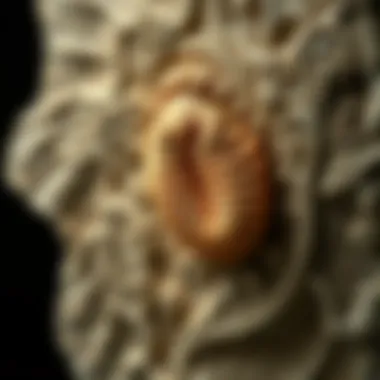
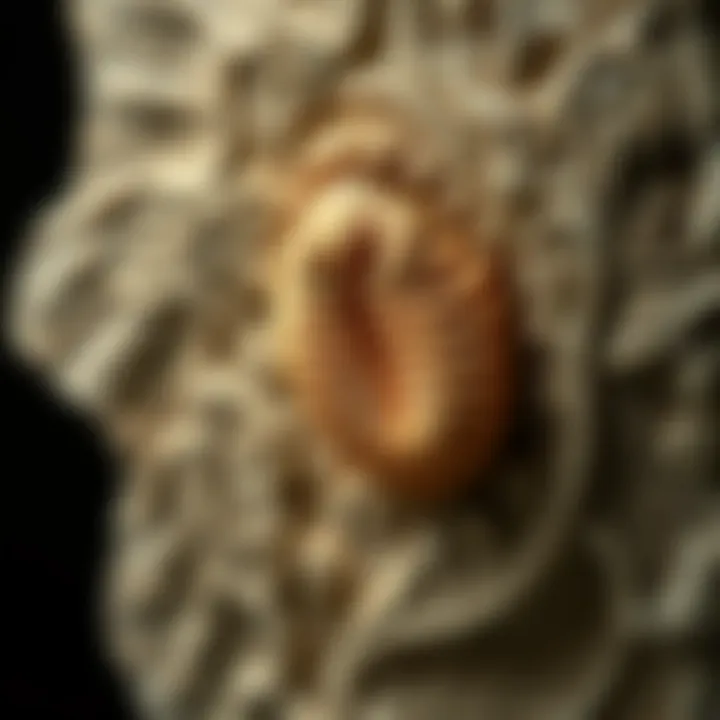
Intro
Trilobites have long fascinated both scientists and enthusiasts, offering a glimpse into a distant past when the Earth looked vastly different. Unraveling the tapestry of life that existed some 500 million years ago, particularly in regions like Utah, helps us grasp the complexity of ancient ecosystems. In Utah, trilobites are not just relics of history, but key indicators of geological processes that molded the region's landscape.
In this exploration, we will embark on a journey through the history and origins of trilobites in Utah. We will identify various species and provide insights into their significance in the broader context of paleontology. By examining fossil sites and preservation conditions, we aim to illuminate how these arthropods thrived in a dynamic environment and the ways they still intrigue collectors and researchers today.
History and Origins
Overview of Collectibles, Rocks, and Fossils
In the realm of fossils, trilobites stand out as a significant and celebrated component of a collector’s haul. The sedimentary rocks of Utah harbor a treasure trove of these ancient creatures. Various formations, such as the Red Fleet State Park and the Drum Mountains, have yielded specimens that range from well-preserved exoskeletons to more fragmented remains. Each find tells a story of survival, extinction, and adaptation that transcends time.
Collectibles, in the context of trilobites, can take many forms. Enthusiasts often seek to acquire complete specimens, which offer a fuller picture of the organism’s morphology and behavior. For others, gravel beds, where these fossils are often found, provide opportunities for amateur paleontologists to uncover small, interesting fragments that can be just as captivating. Understanding how to identify and evaluate these fossils is crucial for both seasoned collectors and novices alike.
Historical Significance and Cultural Impact
Historically, trilobites have captured the imagination of many cultures. From ancient times to modernity, the allure of these fossils is evident. In Utah, Native American tribes recognized fossils in rock strata, considering them tokens of the past and embedding them within their folklore. As geology and paleontology advanced as scientific fields, trilobites became emblematic of the richness of ancient life.
The excitement surrounding trilobite fossils has also influenced local economies, as fossil hunting often brings enthusiasts to the region. Shops dedicated to fossils and geological specimens have emerged, showcasing the beauty and diversity of Utah's trilobite population. Collecting these fossils not only creates a bridge between history and modernity but also fuels a collective curiosity that sparks further research and exploration.
Foreword to Trilobites
Trilobites are more than just remarkable fossils; they serve as time capsules that open a window to a distant era in Earth's history. Utah, a state rich in geological diversity, holds a treasured collection of trilobite fossils that attract both amateur and seasoned collectors alike. Understanding these ancient arthropods provides essential insights into prehistoric life, ecology, and evolution. This first section of the article aims to lay the groundwork for comprehending the significance of trilobites, especially within the unique context of Utah.
As we dig deeper into these fascinating creatures, we’ll explore their defining characteristics, evolutionary journey, and the role they played in ancient marine ecosystems. By delving into their unique anatomy and adaptive strategies, readers will not only appreciate trilobites as fossilized relics but also as vital components of our planet's ecological history.
Definition and Characteristics
Trilobites were marine arthropods known for their distinctive three-lobed body structure, which is where their name derives from—"tri" for three, and "lobite“ for sections. These creatures flourished primarily during the Paleozoic era and disappeared around 250 million years ago. With thousands of species described, their variations are quite staggering. You might find some with elaborate eyes, wild spines, or intricate shell patterns—each trait telling a story.
Here are key characteristics of trilobites:
- Body Structure: Trilobites had a hard outer shell, or exoskeleton, segmented into three lobes. The central lobe is flanked by two lateral lobes. This structure aided in both mobility and protection.
- Eyesight: Many trilobites had compound eyes, some even numbered in the thousands, offering them remarkable vision in the dim light of ancient oceans.
- Molting: Similar to modern-day crabs and lobsters, trilobites underwent molting. This process was essential for their growth, allowing them to shed their exoskeletons regularly to make way for new, larger ones.
- Diversity: They existed in various forms—from the pearl-shaped Agnostus to the larger, more recognizable species like the robust Isotelus. Each variety adapted to its environment in unique ways.
Evolutionary Importance
The evolution of trilobites is a captivating subject, often serving as a reference point for paleontologists studying evolutionary trends. These creatures epitomize the success of early marine arthropods, adapting remarkably well to a plethora of environments during their span of existence. Their lineage offers crucial insights into evolutionary biology, showcasing how life adapted to ever-changing marine habitats.
Some key points regarding their evolutionary role include:
- Biodiversity Indicators: Trilobites were able to adapt to different environments throughout their existence. Their fossil record provides invaluable data about the ecological changes in marine systems over time.
- Extinction Events: Understanding the rise and fall of trilobites contributes to our knowledge of mass extinction events, particularly the Permian-Triassic extinction, where they, like many other species, met their end.
- Fossil Record: Trilobites are abundant in the fossil record, making them a popular and critical focus for understanding ancient life. The diversity and distribution of their fossils assist scientists in reconstructing geological timelines and ancient marine ecosystems.
Geological Context of Utah
Understanding the geological context of Utah is essential in appreciating the rich tapestry of life that once thrived here during the Paleozoic Era, particularly the diverse trilobite populations. This exploration reveals not only the history of Earth’s physical state but also how trilobites, as indicators of ancient ecosystems, inform our understanding of evolutionary processes. The rock formations in Utah hold extensive records of geological activities and climatic shifts that shaped the habitats where trilobites lived.
Utah's Geological Formation
Utah’s geological story is layered, much like the strata of rock that compose it. The state showcases a mix of sedimentary, igneous, and metamorphic rocks that chronicle the events from hundreds of millions of years ago. Being part of the great Colorado Plateau, Utah's landscape boasts a rich geological heritage with numerous formations that date back to the Cambrian period, which is when trilobites first appeared.
Among the prominent formations include the Brighton Formation, which is significant due to its well-preserved trilobite fossils. Here, varying sediment types, influenced by ancient oceanic transgressions and regressions, have created environments conducive to fossilization. Changes in sea levels and tectonic activities contributed to how these organisms were later entombed, preserving their remains for future generations to study.
In addition, the Utah Valley Formation houses a variety of fossil types and marks a later period in the Paleozoic, allowing paleontologists to piece together changes over time in both trilobite morphology and diversity. The stratigraphy of Utah also sheds light on the habitats trilobites occupied through various epochs, illustrating their adaptations to environments ranging from shallow marine shelves to deeper oceanic zones.
Key Stratigraphic Layers Containing Trilobites
The layers of rock in Utah are more than mere geological formations; they are the pages of a history book documenting ancient life. Focus on the Marjum Formation, which is renowned for its exceptional assemblages of trilobite fossils. In this layer, scientists have discovered several trilobite species, including Elrathia kingii, one of the most common trilobites in North America. Its presence in the Marjum Formation emphasizes the ecological diversity and adaptability of trilobites.
Through careful stratigraphic studies, researchers can correlate these fossil layers with similar formations across other regions, highlighting the extensive reach of trilobites. The fossil record in these layers serves not only to catalog species but also to present data regarding past environmental conditions such as temperature and ocean chemistry.
"The preservation of trilobite fossils provides invaluable insights into life during the Paleozoic Era, showcasing evolution and extinction events that shaped marine ecosystems."
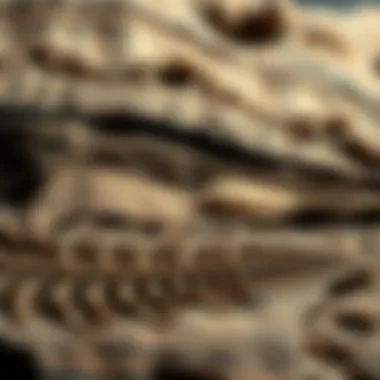
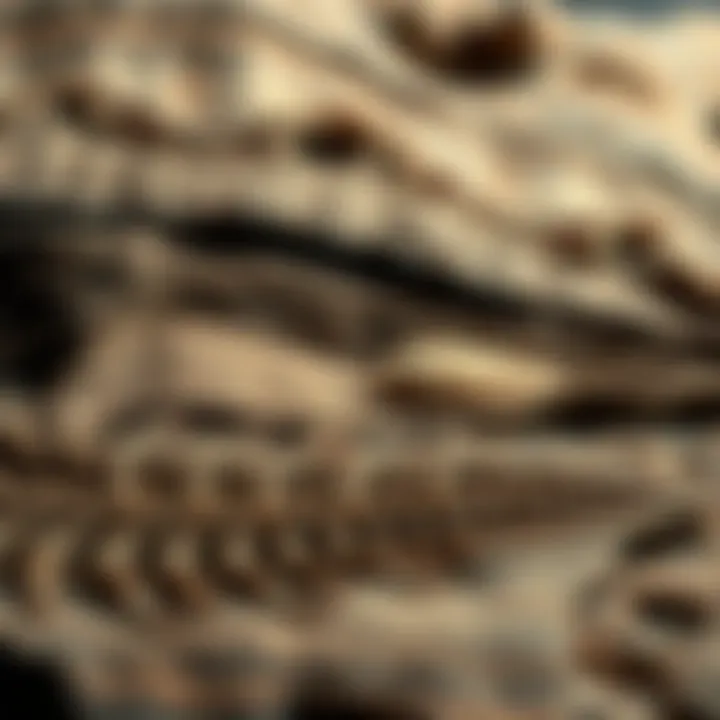
Diversity of Trilobites in Utah
Understanding the diversity of trilobites in Utah is crucial for several reasons. First, it offers insights into the evolutionary history of these fascinating creatures. The state is home to a variety of trilobite species that have adapted to their environments. This diversity reveals much about how life on Earth has changed over millions of years, and what conditions were like during the Paleozoic era.
The presence of various species indicates the complexity of ancient ecosystems, showcasing the vibrant life that once thrived here. From predation strategies to environmental adaptations, analyzing this diversity gives paleontologists clues about the behaviors and interactions of these arthropods, enhancing our overall comprehension of prehistoric life. Furthermore, for rock and fossil collectors, knowledge of these diverse forms enriches the collecting experience, offering a wider range of specimens to value and study.
Common Species Found
Utah's fossil beds showcase various trilobite species, notable among which are the genera Eldredgeops and Phacops. Eldredgeops, often recognized for its distinctive large, compound eyes, presents collectors and paleontologists a fascinating subject to study. These creatures were prevalent from the Sandbian to the Katian ages, providing a significant time span for their fossil occurrence. Their fossils, often found in limestone formations, display remarkable details, allowing for effective identification and classification.
Phacops, on the other hand, is famous for its unusual eye structures and often large, elaborately shaped bodies. These trilobites were common in the Devonian seas that covered much of what we now call Utah. Ample fossilized remains of Phacops can be found in places like the Beehive State, where sedimentary layers have preserved their intricate features well.
- Eldredgeops: Known for its large eyes and robust body structure.
- Phacops: Recognizable by its unique eye patterns and larger size.
Both types serve as key indicators of the ecosystems of their time and are frequently sought after by collectors due to their striking appearance.
Rarity and Unique Finds
While common species abound, Utah also holds treasures that capture the attention of dedicated fossil hunters. Rare finds like Marjumia, a genus present during the Middle Cambrian, tell a unique tale. Unearthed primarily in the Marjum Formation, Marjumia boasts a distinctive morphology that astounds collectors with its rarity and complexity. Its delicate features often remain intricately preserved, giving a snapshot into an era long past.
Additionally, other less-known genera, such as Acanthopyge, can be found infrequently. These trilobites, identifiable by their defensive spines, bring a layer of intrigue due to their relative scarcity and the information they impart about ancient climates and topographies.
When encountering such unique specimens, it is worth noting that some trilobites may exhibit symbiotic relationships or interesting adaptations, reflecting environmental pressures at the time of their existence.
"The rarity of these unique trilobite finds not only enhances the collection's value but also enriches the understanding of evolutionary pathways and ecological dynamics of ancient life systems."
Finding these exceptional specimens requires patience and knowledge. Collectors often share stories about their adventures, exploring the remote outcrops and geological formations that house these ancient artifacts. Each fossil gathered tells a story that contributes to the broader narrative of Earth's history and the life forms that once roamed its surface.
Trilobite Fossil Sites in Utah
Trilobite fossils tell us stories about a world long gone, and Utah is like a jeweled box holding many of those tales. It’s not just the fossils themselves that are important but the places where they're unearthed. Each fossil site offers a unique glimpse into ancient habitats and environments. Understanding these sites allows paleontologists and collectors alike to pinpoint how trilobites lived, thrived, and even died millions of years ago.
Fossil sites in Utah serve as crucial points for scientific inquiry and exploration, revealing the ancient oceans that once blanketed the region. For anyone interested in rock and fossil collecting, these sites aren’t just a collection of bones; they are a window into the past, showcasing the ecological dynamics of the early Paleozoic era.
Fossil Discovery Locations
When it comes to discovering trilobite fossils, Utah has a few key areas that stand out. Some of these locations are well-known among collectors, while others might just be hidden gems waiting to be found.
- Fish Springs Flat: Located within the west desert, this site is often buzzing with amateur and professional fossil hunters alike. The location offers Middle Cambrian trilobites that reflect the biodiversity of their time.
- Red Cliffs Desert Reserve: This area is characterized by beautiful red rock formations, and beneath those, you’ll find fossils from a time when Utah was submerged underwater. Many enthusiasts flock here, especially to explore its vast stratigraphic mosaics.
- Deep Creek Range: Offering peak elevations and rugged terrain, this range provides miles of hiking and the thrill of potential trilobite discoveries. If patience is your game, this location can yield rich finds.
These places not only contain fossils but also geological formations that date back hundreds of millions of years. Finding a trilobite fossil can be a ticket to understanding deeper geological processes, like sedimentation and erosion, which shaped our planet's history.
Field Collecting and Preservation
Field collecting can be an arduous task yet rewarding for those willing to don their outdoor gear and get their hands dirty. When venturing out to collect trilobites in Utah, one must adopt a few smart practices:
- Research First: Before heading out, do your homework on the locations, the laws regarding fossil collection, and any restrictions that may be in place. Some areas might be off-limits to preserve the natural environment.
- Bring the Right Gear: Essential tools include a chisel, hammer, brushes for cleaning, and most importantly, bags to store the fossils. An ice cooler may help if you’re collecting large samples or artifacts that need to stay cool.
Once you’ve collected your treasures, preservation becomes the next step. Protecting your finds requires careful handling and storage. Many collectors suggest using a combination of archival boxes and foam padding to safely store each specimen.
“Proper preservation not only shields the fossil but also maintains its scientific value. Faded colors or breakage can diminish both aesthetic and educational worth.”
For more serious collectors, consider reaching out to professionals at local museums or paleontological societies to understand better the preservation techniques applicable for fossil specimens from Utah.
Overall, the process from digging these ancient remnants out of the earth to keeping them safe ensures the legacy of trilobites remains intact for future generations of collectors and researchers to marvel at.
The Life of Trilobites
Understanding the life of trilobites is crucial in piecing together the puzzle of ancient marine environments. These fascinating creatures thrived in the seas for hundreds of millions of years, adapting to their surroundings in ways that both defined their existence and had lasting repercussions on our comprehension of evolution and ecology. By exploring the habitat and lifestyle of trilobites, along with their predation and survival strategies, we gain valuable insight into their adaptability and dominance in a shifting geological landscape.
Habitat and Lifestyle


Trilobites were primarily ocean dwellers, finding themselves in a variety of habitats from shallow coastal regions to deeper waters. The habitats they occupied varied considerably, and this dynamic environment played an essential role in their development as a group.
- Diverse Environments: Some trilobites flourished in extremely shallow waters, where they scavenged among the sands and mud. Others preferred the deeper waters, sometimes taking refuge in more complex marine ecosystems. These differences explain much about their evolutionary adaptations.
- Benthic vs. Pelagic Life: There were benthic trilobites, which lived mostly on the seafloor, utilizing their hard exoskeletons for protection against predators, while pelagic forms would swim freely in the water column, a behavior that allowed them to escape danger more effectively.
Lifestyle habits reflected their adaptations: trilobites were omnivorous, feeding on algae, detritus, and small marine organisms, often using their specialized mouthparts to scour the sea floor for food. They were not solitary creatures; evidence suggests many may have formed swarms, particularly when it came time to breed, ensuring the survival of their genetic line.
Predation and Survival Strategies
Predation posed significant challenges throughout trilobite history, influencing their development into highly skilled survivors. These ancient arthropods evolved a range of strategies to thwart predators and adapt to their environment, securing their place in the prehistoric food web.
- Defensive Features: Key adaptations included a jointed exoskeleton that provided solid protection and a capacity to roll into a tight ball—an effective mechanism against predators. The fossilized remains often show the fossils of these trilobites still curled up, suggesting this strategy worked effectively to deter threats.
- Mimicry and Camouflage: Some trilobites may have exhibited color patterns that helped them blend into their surroundings, allowing them to avoid the attention of larger marine predators. This kind of camouflage likely increased their chances of survival in the competitive ocean landscape.
- Behavioral Adaptations: When faced with substantial predation pressure, certain trilobites adapted their behavior. Some species may have engaged in burrowing into the substrate to hide or rapid swimming to escape threats. Each of these strategies exemplifies how trilobites managed to exist efficiently within varying environments, marking them as a significant group in geological time.
"Trilobites showcase the resilience and adaptability of ancient life forms, revealing essential lessons about survival in ecology."
The exploration of trilobite life enhances our understanding of ancient marine ecosystems and the evolutionary paths that shaped such organisms. Their unique habitat preferences, lifestyle behaviors, and ingenious survival strategies not only offer clues about their own existence but also provide insight into the ecosystems they inhabited. As paleontologists delve deeper into the past, the lives of these ancient beings continue to inform current ecological dynamics and the interrelationships within the tree of life.
Paleontological Significance
The paleontological significance of trilobites cannot be overstated, especially within the context of Utah’s rich geological tapestry. These ancient creatures serve as both a window into the past and guideposts for understanding broader ecological frameworks. By studying their fossil remains, researchers can glean valuable insights about ancient marine environments and how they functioned millions of years ago.
Understanding Ancient Ecologies
Trilobites, the darlings of the Paleozoic era, thrived in diverse marine ecosystems. Their presence in the fossil record reveals much about ancient environments. For instance, the variety of trilobite species found in Utah indicates a range of habitats—from shallow, sunlit waters where they grazed on algae, to deeper zones with more complex ecological interactions.
- Fossil Evidence: Trilobite fossils, often discovered in limestone and shale deposits, showcase various adaptations to their environment. The intricate patterns on their exoskeletons tell tales of not just their physical form but also the conditions under which they lived. The types of sediments in which they are found can indicate the depth and temperatures of ancient seas, revealing the ecological dynamics at play.
- Food Web Insight: Trilobites themselves were part of a larger food web. They interacted with other organisms, both as prey and predator. Their study can help reconstruct ancient food webs, allowing paleontologists to understand the interactions that shaped these ecosystems.
In essence, trilobites stand as pivotal markers in piecing together the ecological puzzles of ancient marine life. Understanding their roles assists scientists in grasping how similar ecosystems may functioned today.
Trilobites as Bioindicators
Trilobites also serve as bioindicators, which means they can inform scientists about the health of ancient environments. Their presence, diversity, and morphology are directly tied to environmental conditions of their time.
- Indicator Species: Since different trilobite species thrived under specific environmental conditions—be it temperature, salinity, or oxygen levels—paleontologists can use them to assess the state of ancient marine ecosystems. Their extinction or emergence can provide clues about changing conditions.
- Evidence of Extinctions: The fossil record of trilobites also marks significant extinction events. By analyzing trilobite fossils found across different strata, researchers can map these events and analyze the causes, offering insights into how species adapt (or fail to adapt) to changing environments.
Trilobites, therefore, are invaluable not just for what they reveal about their own biology but also for the light they shed on ancient ecological health. In the grand tapestry of life, they represent both an indicator of past climates and a soldier of the seas, facing the challenges of their era with resilience. Understanding their significance deepens our comprehension of ecological transformations over geological timescales.
Trilobites in Popular Culture
The presence of trilobites in popular culture adds interesting layers to our understanding of these ancient creatures. These prehistoric arthropods are not just shallow relics found in rock layers; they’ve made their mark across various forms of media, sparking the imaginations of natural history enthusiasts and collectors alike. The way they have been portrayed reflects both a fascination with their unique biology and their role in our planet’s history, providing insights into how society views paleontology.
Representation in Media
Trilobites have carved a niche for themselves in the realm of fiction and educational entertainment. From documentaries on national television to appearances in popular films and animated series, these creatures have transitioned from dusty textbook images to vibrant screen portrayals. A notable example is the inclusion of trilobites in documentaries like Walking with Dinosaurs, which reimagines their life in oceans teeming with bizarre beings.
Additionally, trilobites find a home in more whimsical representations, such as cartoons or video games that require both historical accuracy and imaginative storytelling. With their distinctive exoskeletons and a wide variety of shapes, it's no wonder they capture the artistic ethos of creators. Selling plush trilobites or even T-shirts with stylized versions of these creatures are just a few ways that they integrate into contemporary culture, extending beyond the realm of science into everyday life.
Impact on Natural History Enthusiasts
For those who revel in the lore of natural history, trilobites represent more than a mere scientific curiosity. They serve as symbols of life’s endurance and diversity, fascinating to collectors and enthusiasts who find joy in fossil hunting. Local and international exhibitions often showcase stunning trilobite specimens in highly regarded natural history museums, such as the Smithsonian National Museum of Natural History, where visitors not only admire their physical attributes but also soak in the stories behind each find.
Natural history enthusiasts create communities, both online and offline, centering on the appreciation of these ancient creatures. Platforms like Reddit host discussions and forums where passionate collectors share their finds, swap stories, and educate each other about trilobite varieties and their geological significance. The camaraderie formed in these circles emphasizes the importance of trilobites not only as subjects of scientific inquiry but as shared interests that transcend boundaries.
"Every trilobite is a time capsule, holding stories of an ancient world embedded in stone."
In summary, the fusion of trilobites in popular culture enriches our appreciation of these fossilized organisms. Whether through media representations or the fervor of natural history enthusiasts, the allure of trilobites continues to inspire curiosity and admiration, ultimately enhancing our understanding of ancient life in Utah and beyond.
Collecting and Valuing Trilobites
The pursuit of trilobites is not just a hobby for many; it’s a journey into the depths of Earth’s history, offering collectors a direct line to ancient life. In Utah, where these fossils abound, understanding both the collection process and the valuation of these specimens becomes paramount. Collecting trilobites can be both thrilling and enlightening, as these ancient creatures provide exquisite experiences for collectors and insights into our planet's past.
Tips for Collectors
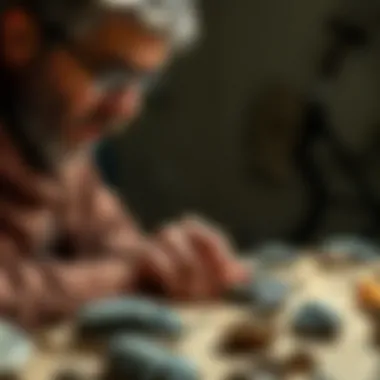
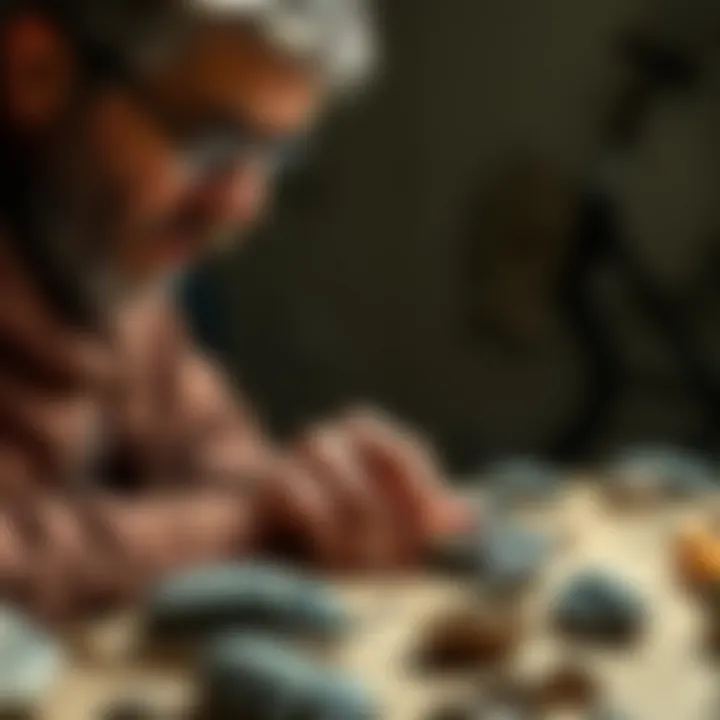
When it comes to building a collection of trilobites, having a strategic approach can make all the difference. Here are some tips that can help ensure your efforts yield satisfying results:
- Research Locations: Not all fossil sites are created equal. Knowing where to look is half the battle. Utah is rich with locations such as the Millard County area and the Garden Park Formation, where Trilobite specimens are commonly found. Study maps and geological surveys to pinpoint promising zones.
- Tools of the Trade: When setting off for a trilobite hunt, equip yourself with proper tools. A rock hammer, chisels, brushes, and safety goggles are essential. A digging kit helps in revealing fossils, while brushes can clean dirt off your finds without damaging them.
- Identify Species: Familiarize yourself with common Utah trilobite species like Phacops and Elrathia. The more you can identify, the more likely you are to recognize valuable specimens when you see them.
- Join a Community: Engaging with fellow collectors can broaden your network and knowledge base. Consider joining online forums, such as those on Reddit or specialized Facebook groups dedicated to fossil hunting. Sharing tips and experiences can lead to better hunting practices.
- Keep Records: Documenting your finds, including locations and conditions, can be incredibly rewarding. It not only helps you learn but also builds a narrative around your collection.
Market Trends and Valuation
The market for trilobite fossils remains active, with various factors influencing their value. Understanding these can help collectors make informed decisions regarding their acquisitions:
- Rarity: The more uncommon a trilobite species, the higher its potential value. Species that are frequently found, like Elrathia kingii, often sell for lower prices compared to rarer types.
- Condition: The state of preservation is crucial. Specimens that are nearly complete and well preserved typically fetch higher prices. On the other hand, fragmentary or damaged fossils may be of interest to some collectors but generally will not command premium prices.
- Aesthetic Appeal: A well-prepared trilobite that displays intricate detail can attract higher bids. A lovely coloration or unique features can make a specimen highly desirable.
- Market Trends: Keeping an ear to the ground regarding the current market trends is vital. Note that prices can fluctuate based on demand and collectors' interests. Auction sites and fossil shows are good places to observe these shifts.
"Collecting trilobites is akin to holding a fragment of time in your hands; each specimen whispers stories of Earth’s past, waiting to be shared."
- Digital Platforms: Explore online marketplaces where trilobites are bought and sold. Websites such as eBay, or specialized fossil sales platforms, can provide insight into current market values and trends.
As the art of collecting trilobites unfolds in Utah, it is vital to embrace both the historical significance and the ongoing valuation trends. By arming yourself with knowledge, you not only enhance the excitement of the hunt, but also ensure that your collection remains a treasured asset.
Conservation and Preservation of Fossils
The conservation and preservation of trilobite fossils in Utah holds paramount significance not only from a paleontological perspective but also for future generations. Fossil sites are like time capsules, offering crucial insights into the Earth's history and the life forms that inhabited it. However, these treasures face threats from natural erosion, climate change, and human activities. Ensuring the protection of these ancient artifacts is essential for ongoing research and education.
Conservation efforts can lead to several benefits:
- Educational Opportunities: Preserving fossils allows for enhanced educational programs. Schools and universities can use these fossils to teach geology and paleontology, inspiring a new generation of scientists.
- Scientific Research: Well-preserved fossils serve as invaluable resources for researchers. They help us understand the evolutionary biology of trilobites and their interactions within ancient ecosystems.
- Cultural Heritage: Each fossil has a story to tell, connecting us to our past. Preserving them upholds our geological and cultural heritage.
Ethical Collecting Practices
When it comes to collecting fossils, ethical practices are crucial. Collectors should always be aware of the laws and regulations governing fossil collection in Utah. Considerations include:
- Permits: Obtaining the necessary permits before excavating fossils ensures that legal and ethical standards are maintained.
- Respecting Locations: Some fossil sites are scientifically significant and should be left undisturbed. Collecting them can lead to loss of information that is crucial for research.
- Responsible Sharing: When sharing fossils with others, collectors should emphasize their origin and context. This practice respects the scientific community and honors the hard work of paleontologists.
Role of Museums and Institutions
Museums and academic institutions play an indispensable role in the conservation and preservation of trilobite fossils. These institutions do more than just house fossils; they actively engage in various preservation efforts:
- Curating Collections: Museums maintain and curate fossil collections, ensuring that specimens are stored under ideal conditions to prevent deterioration.
- Research Initiatives: Many museums engage in research initiatives aimed at better understanding trilobites, often collaborating with universities and research institutions.
- Public Engagement: Through exhibitions and educational programs, museums help the public appreciate the significance of trilobites and their ecosystems, fostering a sense of stewardship over these ancient treasures.
Quote: "The study of fossils like trilobites isn’t just about the past; it’s a window into our planet's future. Understanding these ancient beings can guide us as we face our challenges today."
In sum, the conservation and preservation of trilobite fossils in Utah hinges on ethical collecting practices and the pivotal role of museums and institutions. As we look ahead, it’s vital to foster a culture where these ancient relics are respected, valued, and protected for all to appreciate.
Future Directions in Trilobite Research
Research on trilobites has come a long way, but there’s still a long road ahead. The significance of future directions in this area of paleontology cannot be overstated; these tiny creatures offer a window into past ecosystems and environmental changes. As our understanding deepens, researchers can hope to uncover critical insights about not only trilobite evolution but the complex biological networks they were part of.
Technological advancements are breathing new life into the study of these ancient arthropods, making it an exciting field for both seasoned paleontologists and enthusiasts.
Emerging Techniques in Paleontology
Modern technology is reshaping how scientists study trilobites. New methods involve a combination of traditional fossil preparation and high-tech imaging. For example, computed tomography (CT) scanning allows researchers to get a glimpse inside fossils without the need to physically alter them. This means delicate specimens can be examined intact, revealing internal structures that offer clues about their biology and growth patterns.
Consider the following techniques that are making waves in trilobite research:
- 3D Modeling: Researchers are using 3D printing to recreate trilobite fossils. This not only assists in study but also aids in educational outreach, allowing people to engage with these ancient life forms in a tangible way.
- Isotopic Analysis: By analyzing the chemical composition of fossils, scientists can gain insight into the environmental conditions when these creatures thrived. This information provides critical data regarding ancient climates and ecological systems.
- Molecular Analysis: Although it's a challenging endeavor, examining DNA remnants from trilobites could reveal evolutionary relationships and adaptive traits.
Each of these techniques opens up avenues for exploring questions that previously seemed to have come to a dead end.
Potential Discoveries Ahead
The horizon is brimming with potential when it comes to trilobite discoveries. As researchers continue to refine their methodologies and adopt innovative technology, several promising avenues emerge:
- New Species Identification: Every rock quarry or fossil bed holds the possibility of revealing new trilobite species. The stratified layers in Utah, particularly, present a treasure trove waiting to be uncovered and studied.
- Insights into Extinction Events: Understanding why certain trilobite species thrived whereas others vanished can inform us about larger environmental shifts. Future studies could correlate trilobite extinction patterns with global events, leading to a more intricate understanding of life on Earth before mass extinctions.
- Feedback Loops with Modern Ecosystems: By comparing ancient ecosystems with contemporary ones, researchers may uncover lessons about resilience and adaptation which could be vital in understanding how modern species might cope with climate change and habitat loss.
Through these explorations, trilobites remain a significant focus, and their study continues to contribute to broader ecological discussions. The insights gained from trilobites can indeed illuminate pathways toward understanding the profound dynamics that have shaped life on our planet.
"Trilobites tell the story of ancient ecosystems and give us a glimpse into our own evolutionary journey."
In sum, the future of trilobite research is not just about fossils; it's about understanding the history, ecology, and biology that precedes us. As scientists delve deeper, we can expect to learn more not only about these fascinating creatures but also how they relate to contemporary challenges that our ecosystems face today.



